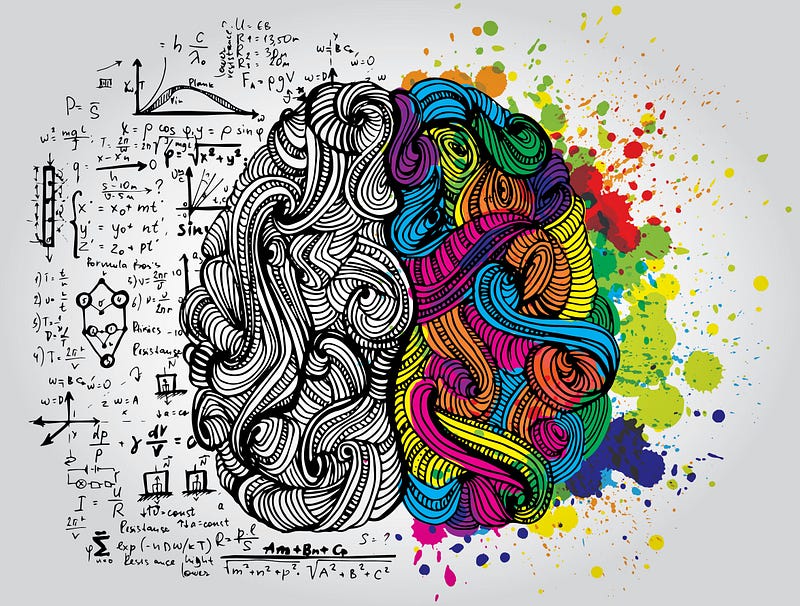# Unlocking the Power of Creativity to Enhance Brain Function
Written on
Chapter 1: The Influence of Creativity on Our Minds
Research has demonstrated that engaging in artistic pursuits and music significantly impacts our mental faculties.

Image credit: Lisa Alisa
Renowned physicist Richard Feynman, known for his Nobel Prize-winning work, was also a passionate bongo player and successful author. Similarly, Albert Einstein, who had a fondness for Mozart, played both the piano and violin in public settings. Mae C. Jemison, an astronaut and physician, attributes her extensive background in dance to her success in these fields, asserting, “The arts and sciences are avatars of human creativity.”
Albert Einstein expressed his profound connection to music, stating, “If I were not a physicist, I would probably be a musician. I often think in music. I live my daydreams in music. I see my life in terms of music… I get most joy in life out of music.” — The Saturday Evening Post, October 26, 1929.
The Link Between Creativity and Innovation
Living in Austin, Texas, a hub for creativity and talent, I often reflect on how this contributes to its status as a center for technological advancements. Famously dubbed The Live Music Capital of the World, Austin's creativity is measured by the Creativity Index, which ranks it as the 16th most innovative city in the U.S. According to the 2015 survey, this index evaluates various factors including Talent, Technology, and Tolerance, highlighting regions best positioned for success in the creative economy.
Richard Florida emphasizes the need for innovations like vaccine development and sustainable energy, arguing that creativity is at the heart of these advancements.
The Role of Arts in Scientific Success
In my exploration of the connection between creativity and science, I encountered a pivotal study by Robert Root-Bernstein, Ph.D., titled Arts Foster Scientific Success. His findings reveal that not only Feynman and Einstein were musically inclined; most Nobel laureates in sciences actively participated in artistic activities.
These accomplished scientists often exhibit polymath characteristics, demonstrating extensive knowledge across various disciplines. They are 25 times more likely than average scientists to engage in singing, dancing, or acting; 17 times more likely to be artists; and 12 times more likely to write poetry or literature.
The Integration of Art and Science
While a certain level of intelligence, such as an IQ of around 115, may be necessary to excel in fields like engineering, the origins of creativity and imagination are far less quantifiable. It appears that the ability to explore and investigate is more crucial for success in science, mathematics, and technology than raw intellect.
Contemporary education tends to focus on convergent thinking, where solutions are derived from memorized answers. This contrasts with divergent thinking, which encourages multiple creative solutions to a problem. Have you ever attended a brainstorming session filled with sketches and word clouds? That’s the essence of divergent thinking in action.
It’s easy to argue that cognitive skills and logic are indispensable, and you’re correct; we should strive for a balance of both types of thinking. The arts enhance creativity and divergent thinking, fostering a well-rounded mindset.
Enhancing Brain Function Through Art
Engaging in the arts boosts creativity, confidence, and problem-solving skills. Brain scans reveal that simply viewing art elevates dopamine levels in the brain. A documented study from 2014 found that ten weeks of art appreciation significantly improved psychological resilience.
Musical practice necessitates a coordination of the left brain's mathematical precision with the right brain's creativity, resulting in a comprehensive mental workout. This enhanced inter-hemispheric communication enables musicians to tackle problems more creatively and effectively.
For instance, I reside with a software engineer who is also a gifted musician. He notes a distinct mental shift when he plays music after a day of focused work, stating, “It’s relaxing, and I feel the tension leaving my body, which allows me to de-stress.”
I also spoke with Jered Danielson, a design technologist and skilled woodworker, about the influence of arts on his profession. He shared, “I think they do. Coding takes a lot of creativity, and inspiration can come from unexpected places. It helps keep the mental juices flowing, think outside the box, and maintain a fresh perspective.”
Stanford University recognizes the synergy between engineering and the arts. Former Dean James C. Gibbons initiated a scholarship program, Engineers in the Arts, 31 years ago, to fund music or studio art lessons for engineering students. Zach Yellin-Flaherty, a computer science graduate and former scholarship recipient, remarked, “I find coding and music to be unique aspects of the same thing. It’s all about creativity.”
Can We Enhance Our Creativity?
The encouraging news is that we can indeed nurture our creativity. Recent studies published in the journal Neuropsychologia indicate that while creativity has an innate component, formal training can amplify our creative abilities. My experiences, along with those of others I’ve talked to, support this notion. As we become more adept in our chosen art forms—be it dance, music, or pottery—we are more likely to achieve a flow state, resulting in near-effortless practice.
So, when seeking fresh ideas or innovative solutions to complex technological challenges, take a moment to step away from your screens. Engage in music, sculpt clay, or pursue whatever activity brings you joy and inspiration.